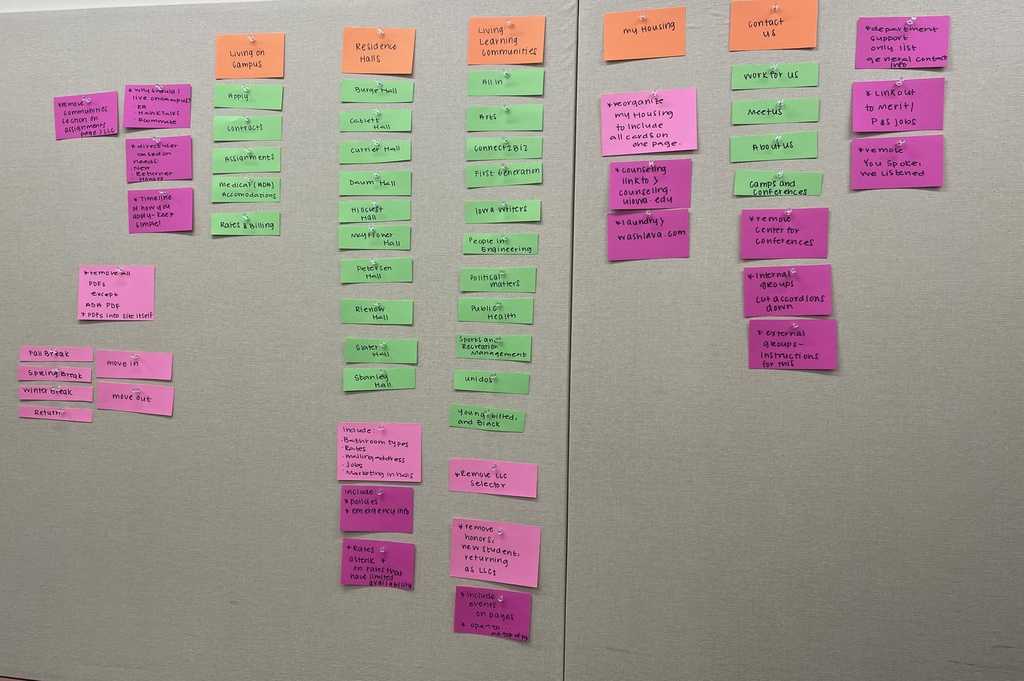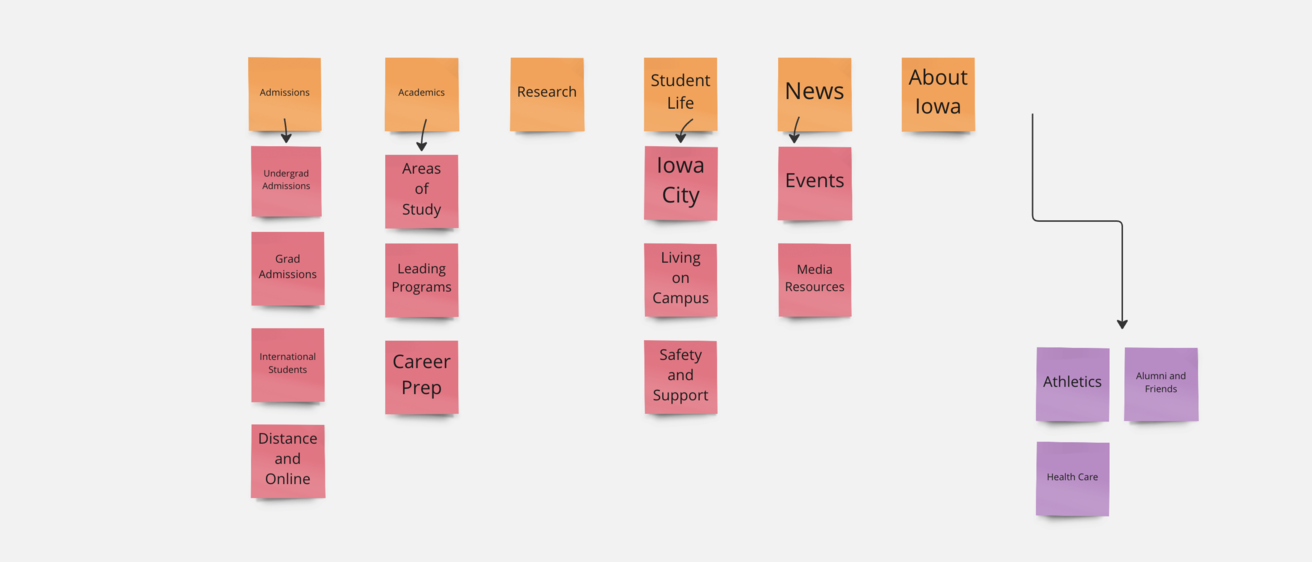When starting a website redesign, one of the things you want to consider is your main navigation menu. This will help you determine the information architecture of your site and where your site content will live for a user to find.
Determining your main navigation menu can be an overwhelming and challenging process. Particularly if you have a site that has a wide variety or large volume of content. In order to make the process a bit easier, conducting a card sort is a good step.
Card sorting is a great tool to help you organize and prioritize your main navigation menus. It can also be helpful when determining if there are any inconsistencies in the categorization of your content or layout. A card sort will help determine what information should be placed on the homepage, sub-menus and information architecture of your site.
Types of card sorts
Card sorting can be done in a variety of ways, but there are two types of sorting methods. These are called open and closed.
Open card sort: An open card sort is one in which you have your participants organize content topics on your website in a way that makes sense to them and then name these topics.
Closed card sort: A closed card sort is one in which you have predetermined categories of where you think information should live on your website. You will then have participants organize content topics underneath those categories in way that makes sense to them.
Conducting a card sort
- Prepare your cards: First you will want to prepare your cards. You will want to write information topics or main menu navigation items on the cards for your testers.
- Determine if you will do physical or electronic card sort: Some individuals prefer to use physical index cards and some prefer to use electronic methods. Using a Miro board with post-it notes is a great tool to conduct an electronic sort.
- Set up the session: You’ll want to connect with your participants and arrange a time for you to talk with them individually. Your sessions can range from 30 minutes to 1 hour.
- Record responses: As you lead the session, ask participants questions about where they would place information on your site. You’ll want to ask them to think aloud and record their responses. This can be done on paper, in a Word document or via audio. This helps you remember what was discussed so that you can analyze the insight and information provided to you in the session at a later date.
- Analyze your data: Once you have conducted sessions with all your participants, you will want to analyze your data. Are there trends you are seeing in these sessions? Are there things participants said that you did not consider? Organize your data, pull out themes or trends, and prepare a report in order to move ahead with your redesign.

Conducting a card sort can be a time-consuming but valuable process. You can gain insight into what users think of your website and how to effectively lay it out. Doing so will allow you to focus on what’s important to your users while helping you to meet your website goals.
For more information on building effective navigation menus, we've included several tips and sample navigation menus here.
